Published by: Nuru
Published date: 06 Jul 2021
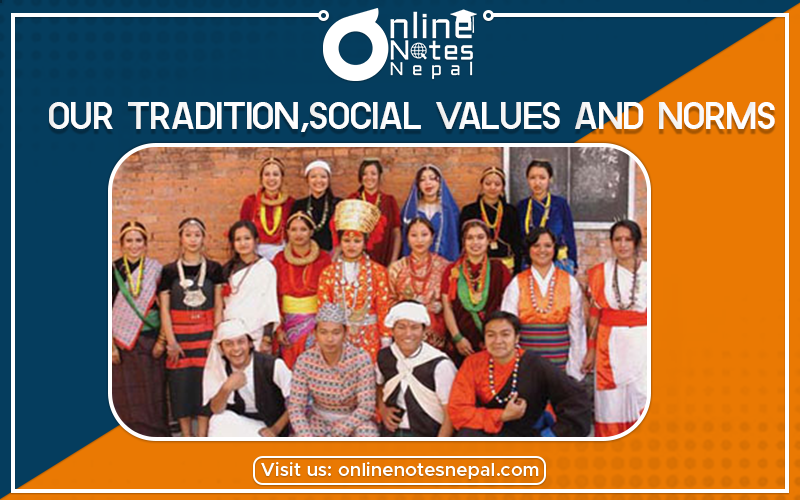
The particular days in which great changes, events, or declarations have been made for the welfare of the concerned people, tribe, class, or the whole country is known as national days. There are certain days in our calendar which we observe with great enthusiasm throughout our country. These are the days of our great achievements, the days when we pay tribute to martyrs or great leaders, the days when our history took a new turn. These days have been declared as National days by the government of Nepal. Some national days are described below:

16th Magh is commemorated as Martyr's day in our country. It is the day when enthusiastic youths were killed for democracy by the autocratic Rana ruler. The commemoration of the martyrs continues for a week in Kathmandu. People pay homage to the martyrs all over Nepal. In Kathmandu ministers, government officers, political leaders, and even ordinary citizens go to the Martyrs gate at Tundhikhel and offer garlands and bouquets to the busts of martyrs in honor of their contributions to democracy. They also visit Teku- Panchali where Shukraraj Shastri was hanged, Siphal where Dharmabhakta was executed, and Shobhagawati where Dasrath Chand and Gangalal were shot dead. Similarly, Sahid Smarak (Martyrs Memorial) at Lainchaur is the place where martyrs are honored by offering flowers, etc. Likewise, we also pay tribute to known martyrs who sacrifice their lives during the movement of 2062/63 BS, and the Madesh movement as well as the Maoist Peoples' Wars.
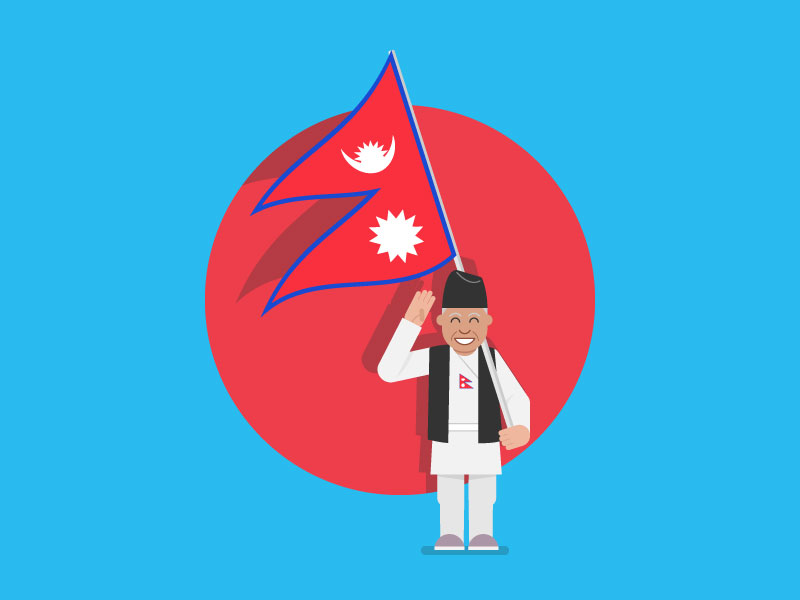
7th Falgun is the democracy Day in Nepal. On that day in 2007, B.S. Rana rule was overthrown and democracy was established in the country. Every year we celebrate democracy day, on this occasion, there is a public holiday. People take out a procession in every town and leaders address meetings in order to raise awareness. Different kinds of programs are launched.
On 14 September 1990, (29 Bhadra), Nepal signed the International Convention on the Rights of the child 1989. We observe this day as Children's day. On this day, various programs are organized in schools and Bal Mandirs. Children are given sweets, fruits, and clothes. Speeches are made to make people aware of child rights.
The constitution day is the day on which the constitution of the country is announced. After the Peoples Movement II, the old constitution the Constitution of the Kingdom of Nepal 2047 B.S. was annulled and the Interim Constitution of Nepal 2063 BS was promulgated on 1st Magh. Thus, 1st Magh is our Constitution Day and we celebrate this day annually.
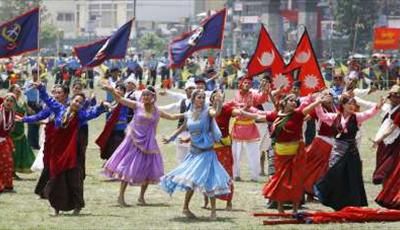
Baisakh 11 is a red-letter day in the history of Nepal. On this day in 2063 B.S., King Gyanendra had to yield to the 1 day long People's Movement II. He had to return the state power and sovereignty to the citizens of Nepal. This day is celebrated as Loktranta Day in the country.
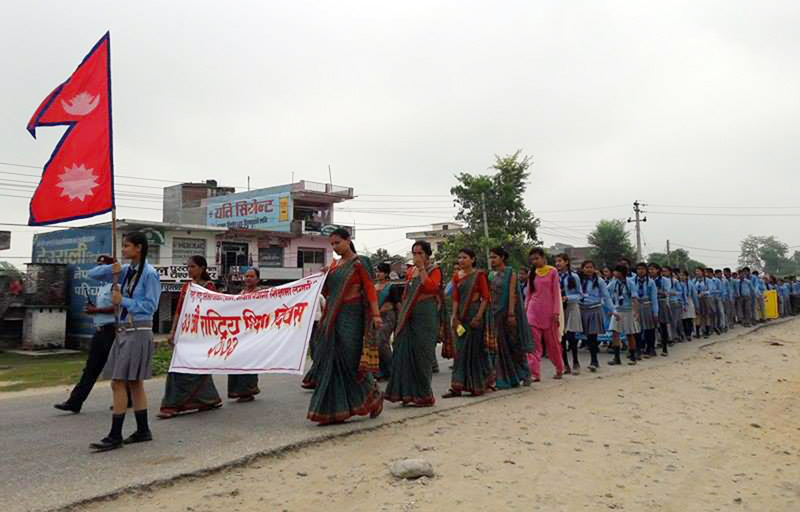
Education day used to be celebrated on Falgun 12 but from 2063 BS it is celebrated on September 8, which is World Literacy Day. On this day, people and institutions that have rendered valuable services to the cause of education are honored and awarded for a special program. In addition to this, medals and certificates of honor are awarded to those who have done a Ph.D. or topped in Masters's and Bachelors's levels. These schools whose SLC results are best in the country or district are awarded education shields.
We celebrate International Women's Day on March 8 every year to commemorate the struggle made for equal rights with men. Women in government service are given a holiday. They organize programs to arouse awareness in women. Men and women are equal in the eye of the law and both of them should be equal in society as well.
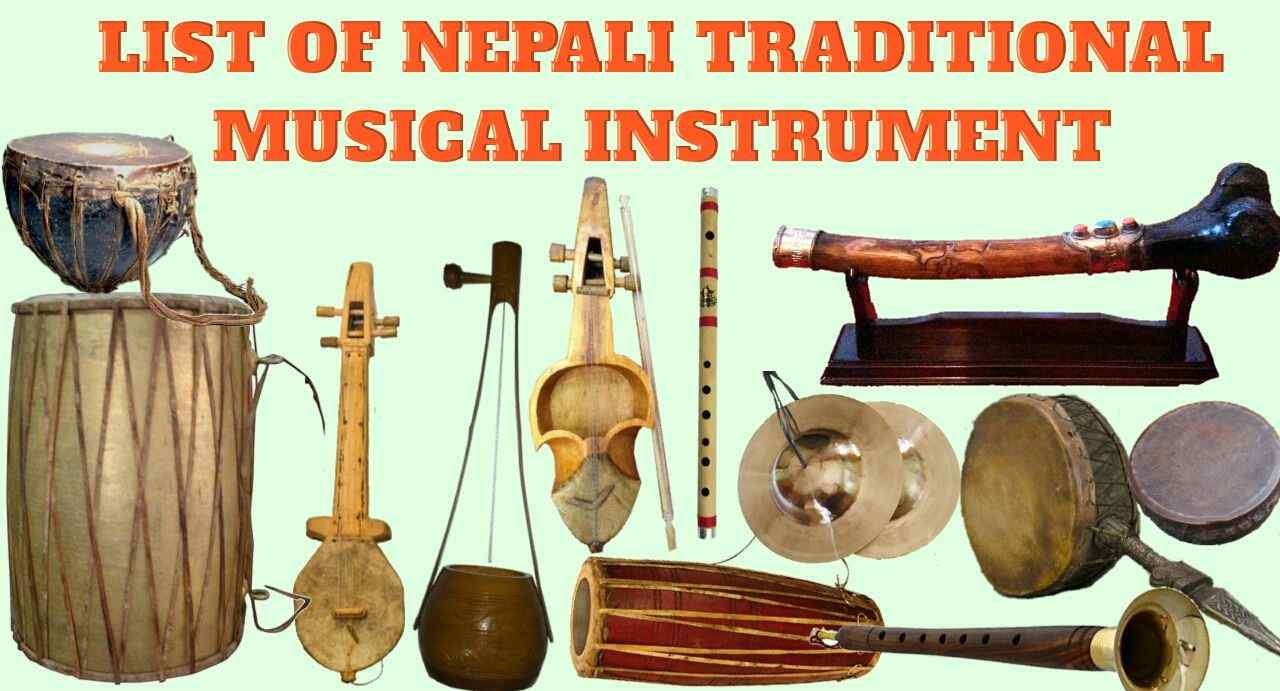
The music which is played during an event like jatras, fairs, festivals, ceremonies, etc is called folk music. It is also played along with folk songs. Folk music is related to a particular place, race, religion, and culture, etc. Generally, the folk musical instrument is made using locally available means and materials. Madal, Sarangi, Jhyali, Sankha, etc are some examples of folk musical instruments.
Along with folk songs, various musical instruments are also played in different festivals, jatras, and ceremonies in Nepal. Like folk songs, the musical instrument also differs according to place, race, religion, and culture.

Madal is one of the most popular musical instruments of the Nepalese community. This musical instrument was first used by the Magar community. Later on, it gained popularity throughout the country. It is made by making a big hole in a piece of thick log and its both open sides are covered with skin. It is carried around the waist and played with both hands.
Sarangi is a traditional musical instrument introduced by the Gandharva community of Kaski district which is made of Khiri wood. It has four wires and is played by rubbing a bow on the wires. The people of the Gandharva community play the Sarangi along with their own local songs that talk about various incidents that happened in the country.
It is made by making a hole in a small piece of hollow bamboo pipe. It is a popular musical instrument throughout the country. It is played by blowing air with the help of our mouth.
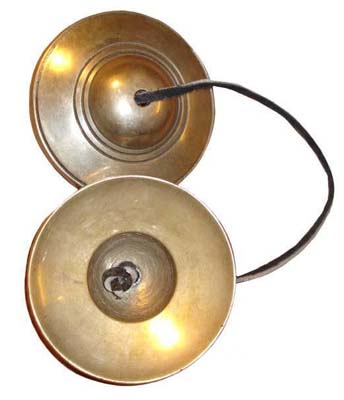
It is one of the musical instruments of Panchai Baja. It is made of bronze metal. It is played with both hands.
Narasingha:
It is also one of the musical instruments of Panchai Baja which is made of copper. It is long and curved like a half-circle.
Sahanai:
It is also a part of Panchai Baja. It is made of metal and played by blowing air with our mouth.
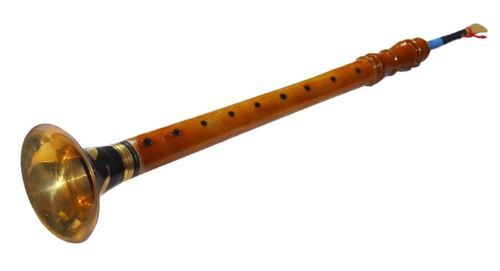
It is a large kettledrum made of copper and covered with skin. It is played by hitting with a strong stick.
The Tyamko is like a damaha / nagara but small in size. It is beaten by two drumsticks.
The shanka is made of the outer shell of a large snail conch. It is used while conducting pooja and while carrying a dead body to the ghat. It is played by blowing with the mouth.
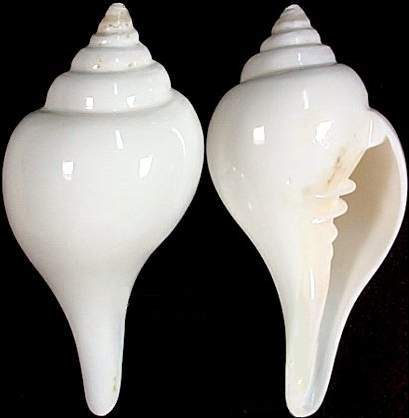
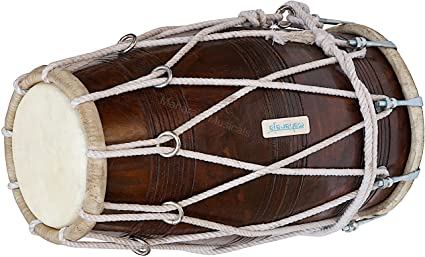
The Dhol or Dholak is made of a hollow cylinder of wood. Its two open ends, which are equal in diameter, are covered with skin. It is played with both hands and produces deep low sound.
The Dhyangro is a circular frame of wood covered with animal skin on both sides with a rod downward to hold. It is used by the witch doctors.
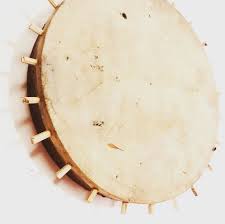
The frame is of wood and covered with skin. This percussion instrument is popular among the Tamangs
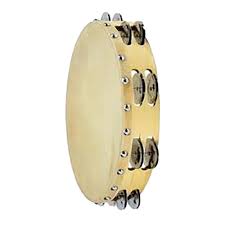
It is used in the Terai region of the Mid-West and village in Mithila. It is a circular wooden frame with one side covered with leather. It is played during the Holi festival.
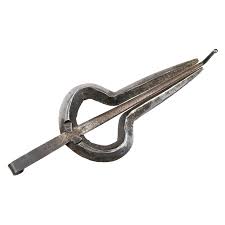
It is made of iron and it produces the sound like Binayo. It is also popular the sound like Binayo. It is also popular among the Kranti people.
This wind musical instrument is made of the horn of the ox. It is popular among the Kirants of the Solu area. They play it in order to please their ancestors.
This musical instrument is made of wood. It is covered with skin. It is held in one hand and played with the other hand while singing Roila and Balan. The Khainjadi has often accompanied the Mujuras the metal disks that jingle.
The Pungi is the combination of coconut shells and three pieces of bamboo. It is played by blowing with mouth and used by the snake charmers. It is also called Bin
It is made of bamboo with two wires. It is used by the Kirant community.
This is a popular musical instrument used in the Himalayan region. It is made from rhododendron and has four wires like the Sarangi.
It is used by the sages and ascetics. It is made of wood, leather, and string.
So, these are the folk musical instruments that are found in the Nepalese community. These musical instruments are in the mouth of extinction. Thus, the government of Nepal should take effective measures to solve such problems.
Causes of extinction of Folk musical instruments:
1. The impact of Western Culture.
2. Lack of institutes and training sectors.
3. Less scope for its use.
4. Lack of public awareness about its importance.
Measures to preserve folk musical instruments:
1. The musical instruments which are in a condition of being extinct should be included in the curriculum and taught in schools and colleges.
2. The active role of Government.
3. Mass awareness about its importance.
4. Conduct folk musical competition from time to time
Classical Dance
The dance which is composed based on a particular religion usually using an established form and supposed not to be played on electric instruments. Classical music is generally considered to be serious and to have a lasting value.
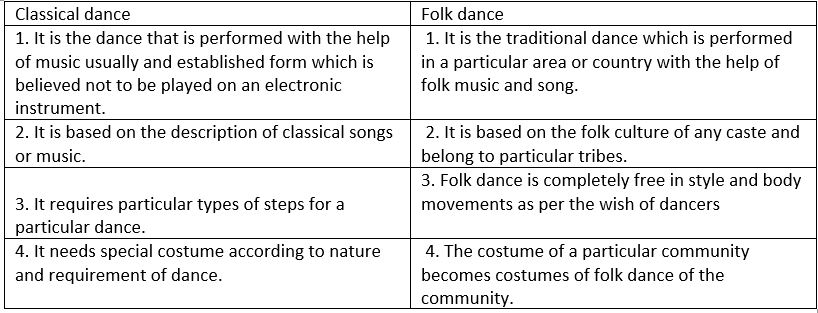
Folk Dances
Dhan Naach:
Dhaan Naach is related to the Rai and Limbu community of our country. This dance is performed by holding each other hands and forming a line or circle. Palum, the song on the occasion is sung and danced usually during harvest time of major crops.
Dandi Dance or Phagu Dance:
Phagu dance is related to the Tharus and other communities of central and eastern Nepal. In this dance, dancer strikes their sticks and produce rhythmic music. They decorate themselves well that identify their culture and tribe. It is danced during Holi and other auspicious occasions.
Deuda dance:
Mid-western and mostly far-western Nepal is popular for deuda dance. It is danced in a circular manner by touching shoulders between adjacent dancers. Feet move back and forth with the song which is sung by the dancers.
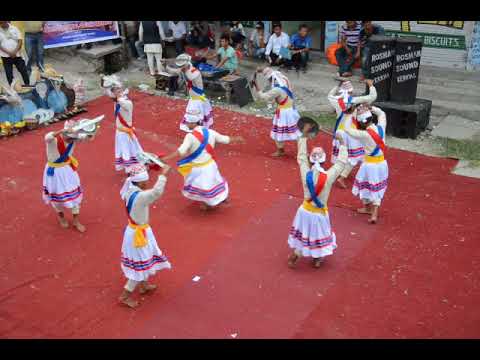
Moondhum dance:
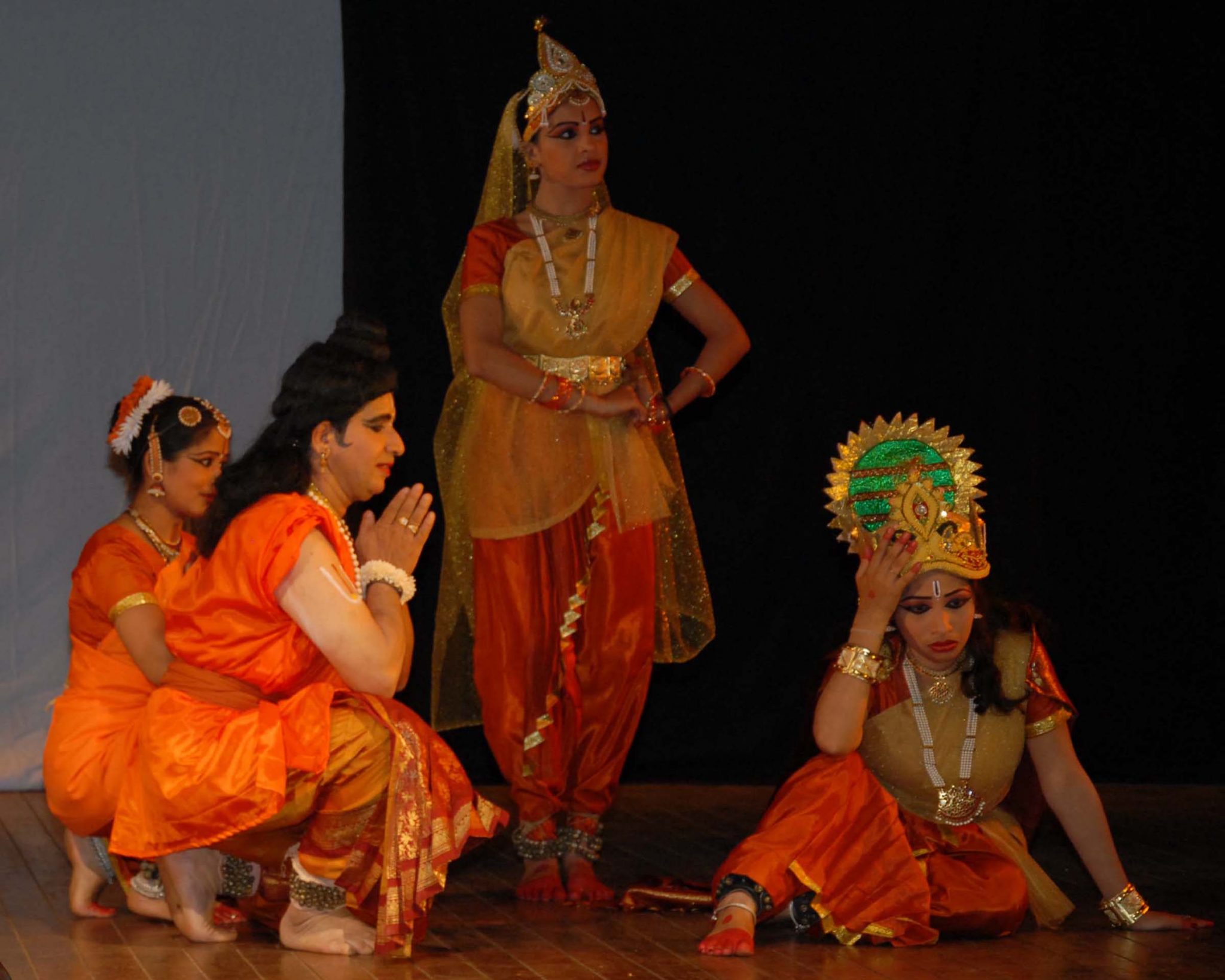
This dance belongs to the kirtans and is popular in the eastern hills. Phedangba/phe dangma or religious priests sing it in the desired tune during the dance.
Charita Dance:
This dance belongs to the terai community mostly. It is based on the theme of epics and holy scripts of the Purans. It is danced by symbolizing the themes.
Chyabrung dance:
It is related to the Limbu community of eastern Nepal. It is danced to the tune of Chyabrung.
Hopcha dance:
This dance is popular among the Rais of Dhankuta and other eastern hilly districts. It is a traditional dance on auspicious occasions.
Maruni dance:
This dance is popular in the eastern hills. Men dress up in Maruni costumes and dance. Themes are humorous as well as religious.
Chandi Naach:
Chandi Naach is performed by the Rai or Kirant community. This dance is performed by holding each other's hands and forming a circle and dancing with the beat of the drum. It is danced during Udhauli and Ubhauli parvas. To provide a rhythmic step, Chandi songs like Sund, Dhol, and Jhyamta are played.
Gauna dance:
This dance is related to Mithila traditional and is popular in the Janakpur region. This dance is displayed on religious and festival occasions.
Hanuman dance:
This dance is popular in Baglung and neighboring districts. Characters display the acts of Hanuman, the devotee of Lord Ram based on the Ramayana.
Measures to preserve or promote classical and folk dances:
i. Public awareness highlighting the importance of classical and folk dances.
ii. Classical and folk dances should be performed on every occasion of community and in every cultural program.
iii. Regional and National classical dance competitions should be organized which helps to preserve and promote it.
iv. Different tribes should form communities to preserve and promote their classical dances.
A countries heritage is all the qualities, traditions, or features of life that have been continued over many years and passed on from one generation to another, especially ones that are of historical or religious importance or that have had a strong influence on society. Nepal is rich in natural and cultural heritage. United Nations Educational, Scientific, and Cultural Organization (UNESCO) was attracted to some heritages of Nepal. In order to preserve and promote them, it gave them a place in the list of world heritage sites. There is a short description of the world heritages from Nepal. There are four sites that are listed as world heritage in Nepal. They are:
Lumbini
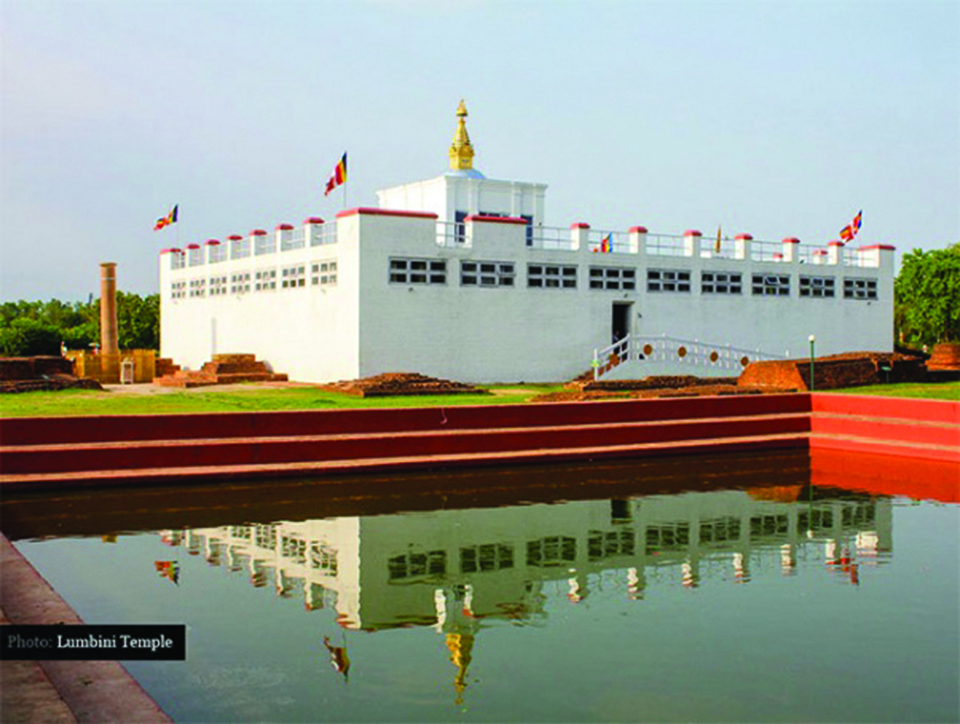
Lumbini is the birthplace of Gautam Buddha. It is the most sacred place of Buddhists from around the world. There stands a famous stone pillar erected by Indian Emperor Ashoka, who visited the place in 245 BC. Pushkarini Pond and Mayadevi Temple are also very famous. The Lumbini Development Committee of 13 countries including Nepal was formed in 1970 AD to carry out a master plan for the development of this area. Beautiful stupas, monasteries, vihar, libraries, a museum, and a research center are constructed there. Many countries such as Myanmar, Japan, Vietnam, South Korea, India, Thailand, France, and Germany have erected vihars there. Lumbini was included in the list of the World Heritage in 1997 AD.
Sagarmatha National Park
Sagarmatha National Park covers an area of 1148 sq km and lies in the Solukhumbu district of the Sagarmatha Zone. This park contains mountain peaks like Everest, Lhoste, Choyu, Nuptse, Pumori, Amadablam, and some villages. These peaks have long been popular among mountaineers from throughout the world. Several kinds of vegetation such as rhododendron, dhupi, bhojpatra and birds, and animals like wild yak, musk dear, and red panda. Snow leopard, Himalayan black bear, and Lophophorus are found there. It was listed in the World heritages Sites in 1979 AD.
Chitwan National Park
Chitwan National park is situated in Chitwan, Makwanpur, and Parsa districts. It is nearly 120 km southwest of Kathmandu and occupies an area of 932 sq km of forests, marshes, and rivers. It preserves rare and endangered animals like one-horned rhino, spotted tiger, elephant, leopard, bear, crocodile, and birds like hornbill and peacock. It is a famous destination for tourists. It was recognized as a world heritage sites in 1984 A
Kathmandu valley is considered a cultural site because of these seven monuments that explain the cultural variety of Kathmandu valley.
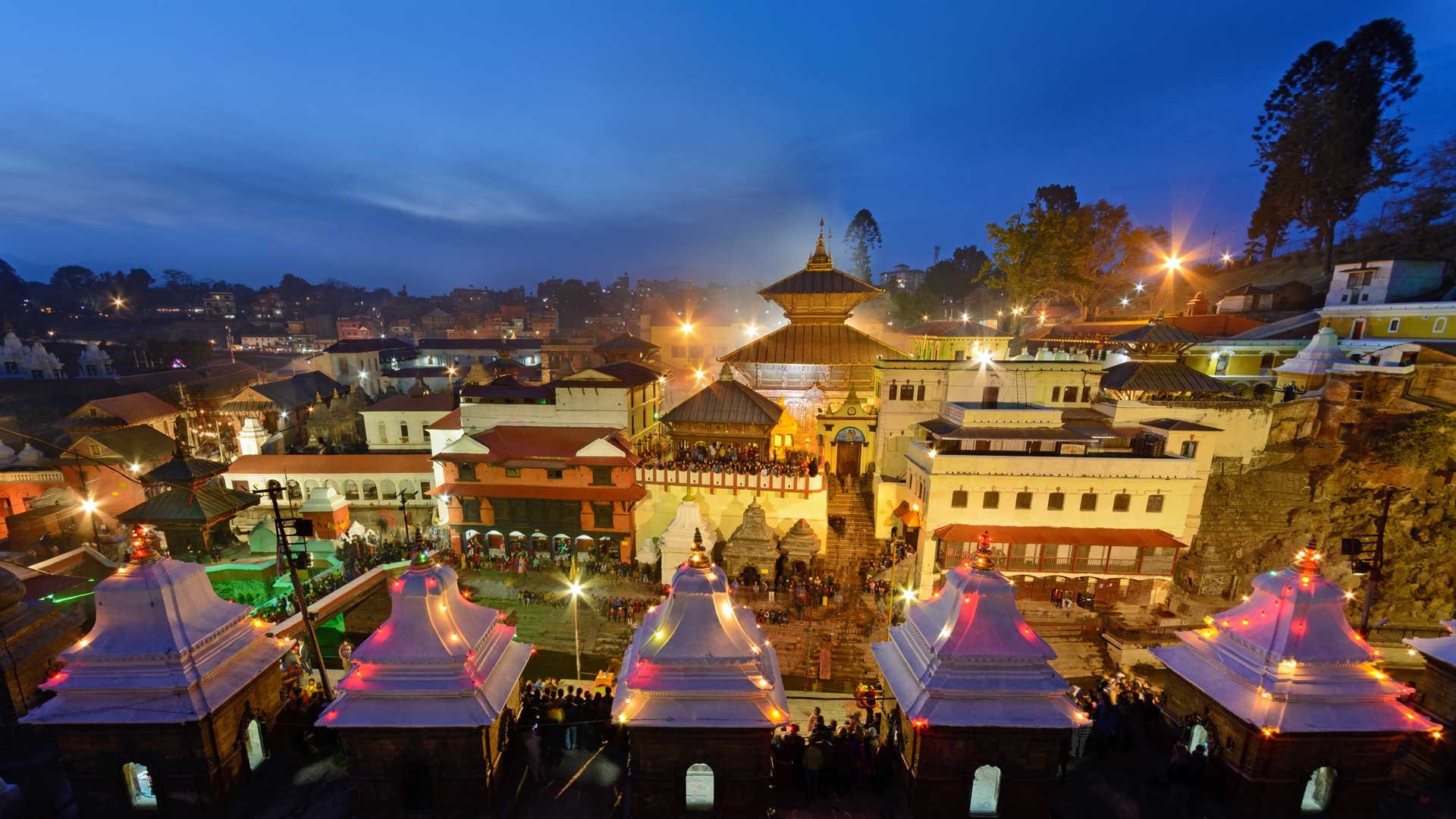
Pashupati area is situated on the bank of the Bagmati in Kathmandu, the Pashupati Area is a holy place of the Hindus in Nepal and abroad. It includes Pashupatinath Temple, Aryaghaat (Cremation bank), Deupatan, Jayabageshwari, Gaurighat, Kutumbahal, Gaushala, Pingalastan and the area around the shelsmantak forest. The Pashupatinath temple is built in the pagoda style with a golden roof. There are about 492 temples, shrines, chaityas, etc. and about 1000 shillings in the area. Ancient art, architectures, sculpture, and carvings are very attractive. The Pashupati Development Trust works to preserve and promote this area. It was included in the World Heritage Sites in 1997 AD.
This famous monument zone was the administrative center of many Malla and Shah kings. It lies in the heart of Kathmandu. King Pratap Malla erected the statue of Hanuman (monkey god) in this palace in the medieval period. Since then it is called Hanumandhoka. One can see the masterpiece of Nepal art and architecture there. Besides Hanumandhoka, Basantapur palace, Taleju Temple, museum, Kumarighar, kasthmandap, a huge bell, and kettle drum are other attractions there. It is a famous tourist destination in the valley. It was included in the list of the World Heritage Sites in 1997 AD.
It was another palace area of the Malla Kings. It is located in the Lalitpur district. Here lies the famous Krishna temple with 21 golden pinnacles. The site consists of beside the palace and Krishna temple, Bhimsen Temple, Statue of Yognarendra Malla, the temple of Rato Machhindranath, and Taleju Temple. Patan Durbar Square exhibits masterpieces of the art and architecture of the Malla period. It is a famous tourist destination. It was recognized as a World Heritage Site in 1997 AD along with the six other cultural heritages of the Kathmandu valley.
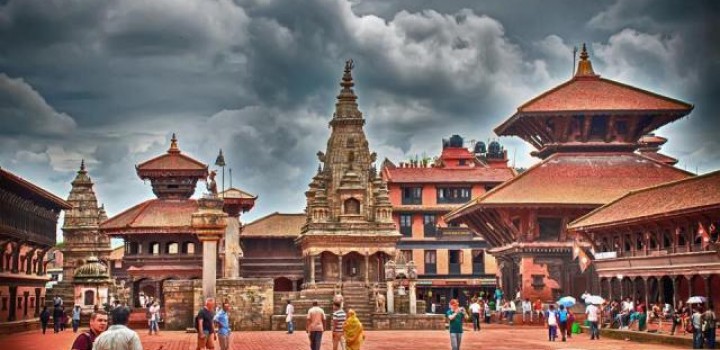
Bhaktapur lies at a distance of about 15 km to the east of Kathmandu. During the Malla period, there was a powerful kingdom. Now it is a major tourist destination in the Kathmandu valley. Much of the existing structures such as Natyapola temple and fifty-five Windowed places were constructed by King Bhupatindra Malla. Dattatraya Temple, a statue of Bhupatindra Malla, colossal bell, kettle drum, and museum are among other attractions of the area. The carvings on the walls, windows, and doors of the fifty- five windowed palace are exquisitely beautiful. Bhaktapur Durbar Square was listed as a world heritage site in 1997 AD along with other durbar squares and four religious sites of the valley.
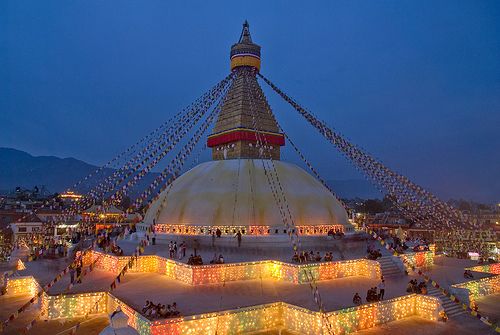
It is located in the east of Kathmandu which is one of the most sacred places for the Buddhists. It is believed to have been built around the fifth century. This stupa contains valuable inscriptions. There are more than 45 Buddhist monasteries in this area. It is visited by thousands of pilgrims every year. It was included in the World Heritage Sites in 1997 AD.
It is a very ancient temple in Kathmandu and is a very holy place for Buddhist pilgrims. Around the stupa can be seen in several shrines, monasteries, and idols. Not long ago, the largest idol of Lord Buddha in Nepal was constructed on its premises. A temple of goddess Saraswati, the Goddess of Learning, stands there. This is an example of religious tolerance in Nepal. It is also entered into World Heritage Sites in 1997 AD. The list of our heritages does not end here. There are many more heritages in Nepal such as Bardiya National Park, Shivapuri National park, Halesi Mahadev of Khotang, Ram Janaki Temple, Vindyabsini, and Talbarahi of Pokhara, Kalika of Baglung, Gosainkunda of rasuwa and swargwadari of pyuthan. All this heritage should be preserved and promoted. The government, organizations, and individuals have their parts to play for this.
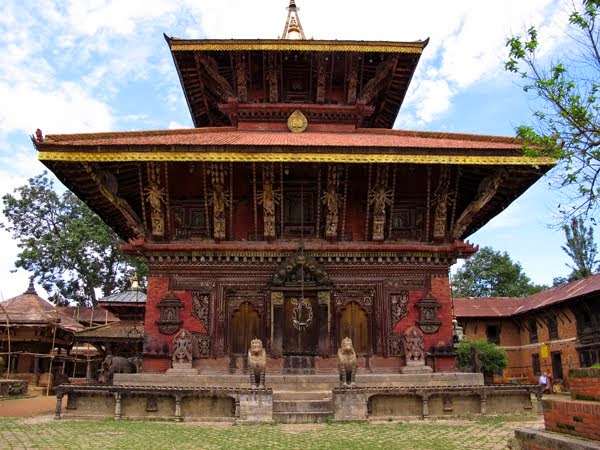
This temple lies on a hilltop in the north of Bhaktapur. It is said to have been built by Lichchhavi king Manadev in the fifth century. It is an excellent example of the pagoda style. There are beautiful idols and statues of birds and animals at the entrance. This site is important because of ancient inscriptions on stone, wood, and metal. It is a venue for some Jatra and festivals.
Musical Instrument produces melodious sound. They make the songs very pleasant to the ears. They are played when songs are sung during festivals, jatras, and marriages and according to the place, caste, religion, and culture.
Traditional Nepali musical instruments can be divided into three general categories:
The descriptions about the Nepali musical instruments into these three groups are given below:
Madal:
The Madal is a very popular instrument of Nepali Life. Magars were the first community to use it, but now it has become common to all communities. It is made of a hollow wooden cylinder with both open sides covered with skin. It is hung around the waist and played with both hand
Bansuri/Murali:
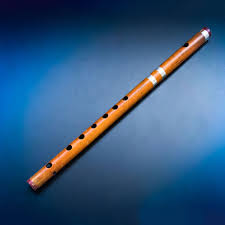
The Basuri/Murali is a popular musical instrument all over Nepal. It is made up of a thin hollow bamboo pipe. One end of it is cut obliquely and a small piece of wood is pushed into it. A rectangular hole is made on the opposite side of the mouth. A little away several small holes are made. The other end remains open. The Murali is played by holding its oblique end between lips but the Bansuri is played through by blowing.
Panchami Baja (Set of Five Instruments)
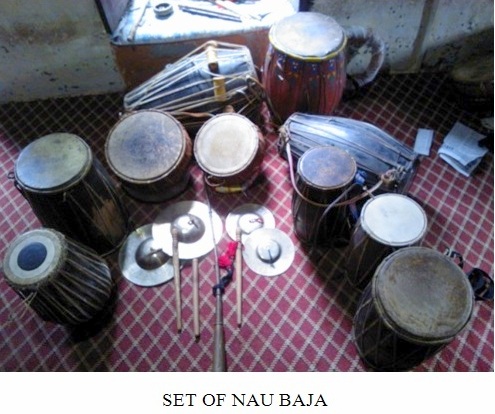
Sahanai:
This musical instrument is made of metal. It is played by putting it between the lips and by blowing. Music products are very sweet. It is the leading Panchai Baja.
Tyamko: The Tyamko is like a damaha / nagara but small in size. It is beaten by two drumsticks.
Nagara/Damaha: It is a large kettledrum made of copper and covered with skin. It is played by hitting with a strong stick.
Narsinga: The Narsinga is a musical instrument like a horn. It is made of copper. It half-circle in shape. It is blown at one end. The longest available narsinga is at Kaskikot, Kaski. It is about nine feet long.
Jyali/Jyamta/Jhurma: It is made of a bronze medal. It has two pieces. It is played by hitting one piece with another.
Sarangi: The sarangi is originally the traditional musical instrument of the ganarvas and is very popular with them. It is specially made of the wood of khirro. It has four strings. It is played by rubbing a bow on the wires.
Other More Local and Special Instruments
Simply a dance is the regular movement of feet and body in a pleasing way. Some music and dance are very closely related. Music is incomplete without song and song without music is not very pleasing. Similarly, dance should be accompanied by songs and music. The combination of song, music, and dance is very important. They not only captivate our hearts but also remove our boredom, anxiety, and agony. We feel relieved. There are two kinds of dance: classical dance and folk dance. Classical dance is based on ancient classics; whereas folk dance is based on folk songs and music. Some of the examples of classical and folk dances are described below:
Ghatu Naach
It is popular among the Gurung community. Unmarried 11 to 19 years old girls go to their guru who invokes the goddess into them who are performing the dance. The dancers sing the mantras.
Deuda Naach

This dance originally belongs to the Mid Western and Far Western Region. It is performed forming a circle shoulder to shoulder and by holding hands of the adjacent dancers.
Sorathi Nritya
This is a dance prevalent in the Gurung community. It is danced in a circle. The dancers also dance playing Madal hanging down from their waist.
Maruni Nritya
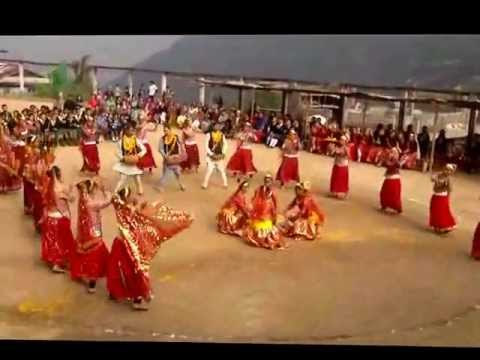
This dance is growing popular in the eastern hills. It is performed by men in the disguise of women.
Devi Nritya
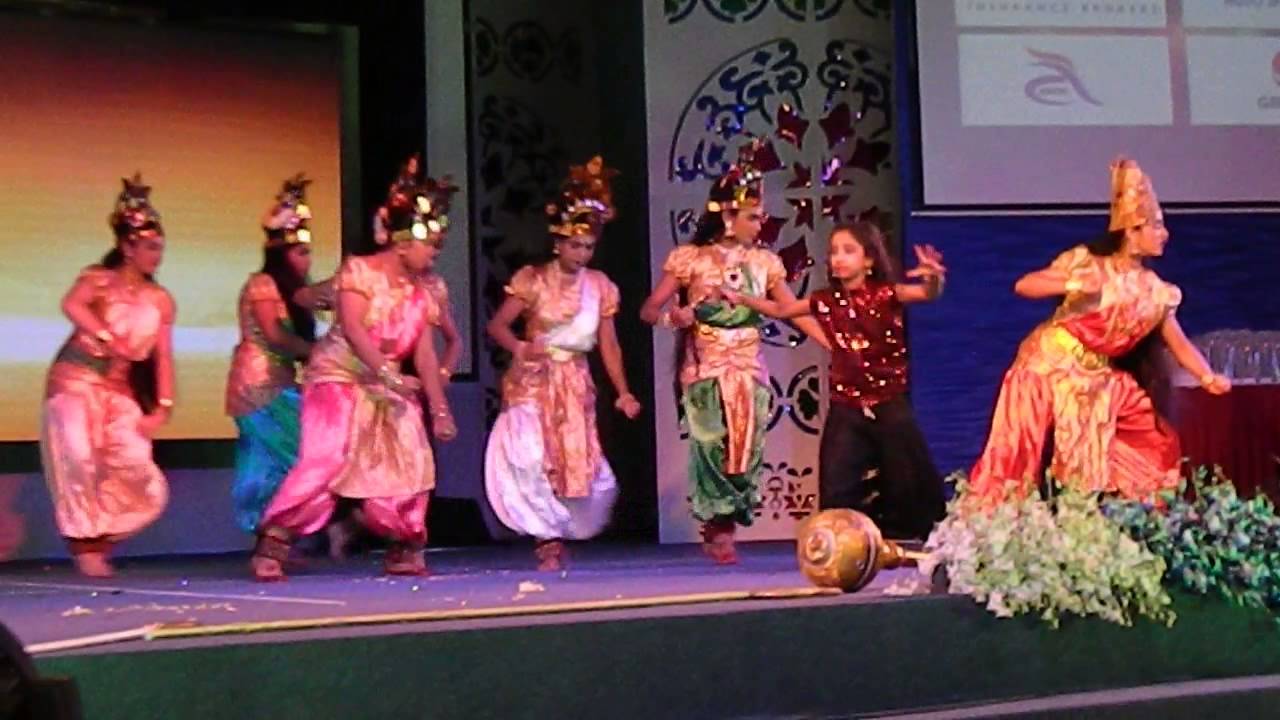
This dance continues from Gaijatra to Indrajatra in the Kathmandu valley, especially in Bhaktapur.
Hanuman Nritya
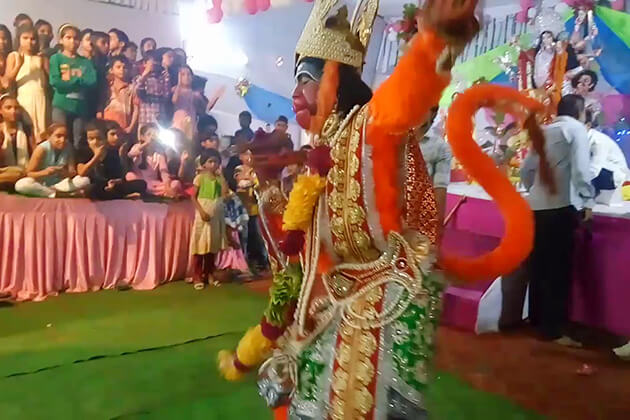
People disguised as Hanuman, who was the devotee of Ram, perform the dance. It is in practice in Baglung, Syanjha, and other districts in the region.
Dhan Naach
Dhan Naach is usually practiced in the Limbu community. It is performed during the harvest, the season of the major crops. Young Limbus enthusiastically participates in the dance. They dance holding each other's hands to form a circle or line. The song sung on this occasion is Palam. Sometimes, to perform this dance.
Chandi Naach
This dance is prevalent in the Rai community. While performing this dance Chandi song is sung with Dhol- jyamta. It occurs during the festival of Uddhauli and Ubbhauli.
Dandi Naach
This dance is prevalent in the east as well as the central terai. It is performed on Phagu Purnima. It is performed on Phagu Purnima. It is performed by hitting two sticks. It is called Phagu Naach also.
Gauna Nritya
This dance on Mithila tradition It is very popular in the Janakpur region is displayed on religious occasions.
Kaura Naach
Kaura naach is popular among the Magars of the western region. It is accompanied by Kaura's song.
Charya Nritya
Based on the story of gods and goddesses, this dance is prevalent in Kathmandu.
Madikhole Naach
This dance is practiced in the Midwestern region.
Hopcha Nritya
This dance is popular among the Rai community of Dhankuta. It is a traditional classical dance.
Singaru Nritya
This is practiced in the Midwestern hills, especially in the Jajarkot district.
Panchabuddha Nritya
This is a dance based on the Buddhist tradition.
Chhokara Nritya
This dance is popular in the far western region of Nepal. It is somewhat similar to Maruni dance.
Tarware Naach
It is a traditional folk dance of the Gandharvas.
Khyali Naach
Khyali Naach is called Pangdure dance also. It is also based on Khyali song. It is danced to the music of the Khainjadi and mujuras festivals and poojas.
Bhairab Nritya
This is a classical dance in which the dancers assume the guise of Bhairab. It is practiced in Kathmandu and Pokhara.
Mundhum Naach
This dance belongs to the kirant community. It is popular in the eastern hills. Phedangma or Nakchhong (priest) sings Mundhum during the dance.
The great persons who have made a great contribution to international peace, understanding, discovery, or development are called international personalities.
He is a renowned Indian child rights activist and the winner of the Nobel Peace Prize in 2014. He is the founder of an organization dedicated to the eradication of child labor and rehabilitation of the rescued former child workers. Child labor is a major problem in India where millions of young children are engaged in various forms of work and not getting an education. Satyarthi has been working as a children’s rights activist from the past many years and has liberated over 80,000 child laborers since 1980. He formed the Save Childhood Movement to create awareness about this social evil and to rescue children from labor. He has been honored with several awards for his relentless humanitarian work, including the Nobel Peace Prize for 2014 which he shares with the Pakistani activist Malala Yousafzay.
Awards & Achievements
Martin Luther King Jr. is considered to be one of the most important historical figures of America. He struggled to bring about freedom, equality, and respect for all in the US.
Martin Luther King, Jr. was born on January 15, 1929, in Atlanta. King graduated from Morehouse College in 1948 with a degree in Sociology. He further received a Bachelor of Divinity in 1951 and then a Ph.D. from Boston College in 1955.
Martin Luther King, Jr. was appointed the pastor of the Dexter Avenue Baptist Church in Montgomery, Alabama. It was while serving as pastor of the church that Rosa Parks was arrested for refusing to give up her seat on a bus to a white man. This occurred on December 1, 1955. By December 5, 1955, the Montgomery Bus Boycott had begun. During this time, African-Americans refused to ride the public bus system in Montgomery. The boycott lasted 382 days. At the end of December 21, 1956, the Supreme Court ruled that racial segregation on public transportation was illegal. He was made the leader of various protests and was arrested numerous times. He was a part of many nonviolent protests as he helped lead the fight for desegregation and equal rights.
On August 28, 1963, the March on Washington led by King and other Civil Rights Leaders took place. It was the largest demonstration of its kind in Washington, D.C. up to that time and approximately 250,000 demonstrators were involved. It was during this March that King gave his historical "I Have a Dream" speech while speaking from the Lincoln Memorial.
In 1964, he was honored as the youngest person ever to receive the Nobel Peace Prize at the age of thirty-five. He gave the entire amount of the prize money to help with the Civil Rights movement. Between 1965 and 1968, King continued with his protest work and fight for Civil Rights. He was actively critic of the poverty and supported equal human rights, food, shelter, education, health reach, equal pay, etc. Many powerful people and organizations were angry at King for this. They spread lies and wanted to make people go against King. And one such person who didn’t want King to succeed shot him after a rally. Martin Luther King was assassinated in Memphis, Tennessee on April 4, 1968.
Dr. Martin Luther King had seen a dream of a social revolution. He raised voice for end of ethnic divisions and end of discrimination, suppression from white people, equality, freedom and honor, and liberation from violent war. A did this by promoting a non-violent social revolution. The whole world still praises his work and considers him to be one of the most influential figures of the last century.